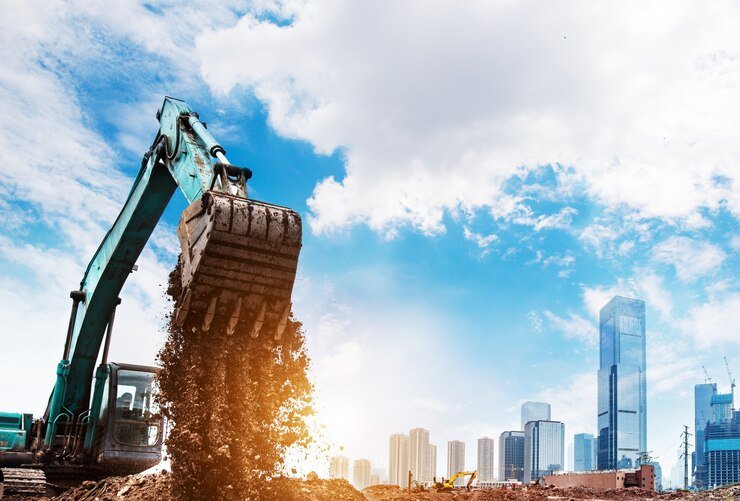Every construction company needs the right equipment to simplify tasks and ensure worker safety. Choosing which equipment to purchase is essential to keep costs down without sacrificing work quality. Each purchase must be carefully considered to ensure the company sees the highest return on investment.
For example, a company might need an excavator for a project. Should it purchase, lease, or rent it? Another option is to look for equipment that can be used for multiple purposes. Although the company may spend a little more at the time of purchase, it will ultimately save money by using the machine more. How can a company determine which option is right for their needs?
Cost-Benefit Analysis
The purchasing team must conduct a cost-benefit analysis to determine which option best meets the company’s needs. When people think of this type of analysis, they may think of project management. This process should be completed before starting any project, but it can also be used to determine which route to take when making a major purchase. The analysis will let the business owner know if the anticipated benefits outweigh the projected costs.
If the benefits don’t outweigh the costs, it would be better to rent the equipment. The business owner will be able to complete the project as agreed but won’t spend unnecessary money on equipment that will sit idle most of the time. Renting will be the most cost-effective way to complete the project without sacrificing quality. This analysis should be carried out with each purchase being considered.
Necessary Equipment
When a piece is used on most of the company’s projects, the owner should lease or purchase the equipment. This saves them money over time. However, they need to analyze each purchase and determine if another machine can do the same work and complete additional tasks. Purchasing machinery that offers several functionalities benefits the company in countless ways.
The company will only pay for one machine and will only need to store, maintain, and repair one. Training employees to use one machine takes less time than training them on multiple pieces of equipment. Which multi-purpose items might a company consider investing in?
Backhoe Loader
A backhoe loader can be used to complete multiple tasks. It combines a backhoe, loader, and tractor in one machine. The loader can move rapidly over difficult terrain while carrying construction materials and other items. The same machine can also dig a waterway, install a downpipe, or set up cables in the ground. A company that invests in a backhoe loader will reduce purchase, storage, and maintenance costs, as the machine can be used for multiple tasks simply by changing the attachments. Additional attachments can be purchased as needed for various jobs.
Tower Cranes
Tower cranes that self-erect can lift more than other cranes, which is why many companies invest in this equipment today. They can attach the crane to the ground or the side of a structure. Construction managers with tight budgets often invest in this equipment because the crane has low operating costs. The company will see increased productivity as the crane allows the work to be done in less time.
Volumetric Mixer
Concrete companies wouldn’t exist without volumetric mixers. This equipment significantly reduces the time needed to complete various projects because it can make concrete to meet the project specifications. The operator adjusts the inputs put into the mix, and the equipment does the rest. The company no longer needs to purchase premixed concrete from a plant and can control the amount of concrete made, reducing waste. The concrete is fresh and of the highest quality.
Electric Forklifts
Electric forklifts are the preferred choice of many companies today because they use less fuel and oil than their non-electric peers. They don’t break down as often and require less maintenance, so the company gets more use from them. An electric forklift helps a company decrease labor costs by reducing the time needed to complete various tasks. It will streamline the handling of construction materials. Companies should compare several electric forklift models to find the one that best meets their needs.
Motor Grader
Many construction sites today require haul roads to move heavy and bulky materials to the project site. These roads must remain free of potholes, puddles, and other hazards to ensure the materials aren’t damaged. A motor grader is ideal for this purpose, as it helps the company maintain the road. In addition to protecting the materials from harm, the motor grader protects vehicles that travel the road from damage. Thus, the company won’t constantly have to take the vehicles out of service to maintain and repair them. A motor grader increases construction productivity while boosting cost efficacy.
Double Drum Road Rollers
Double-drum road rollers are also necessary on many job sites. They allow terrain to be flattened quickly and at less expense. Companies find that investing in this equipment streamlines their budgets while enhancing productivity. They can use the machine on various projects, knowing that its hydraulic systems hold up well even when the equipment is continuously used. A double-drum road roller can also be used in extreme weather conditions without worry.
Telehandlers
A telehandler shares some similarities with forklifts and cranes. Thanks to its versatility, it may be able to replace both pieces of equipment on some job sites. Cost overruns decrease when a company invests in this equipment. The operator installs a lifting winch to use the telehandler as a model crane, and some machines come with a rotating upper section. This section allows the operator to use the telehandler as a cab-down rough-terrain crane. The advanced steering mode on these machines makes them highly mobile, so the operator can typically drive the equipment to the job site.
The abovementioned equipment is cost-effective and allows work to be completed quickly without sacrificing quality. Companies should research all options to learn which machines will benefit their operations and allow them to maximize their budgets. With the right equipment, a company can reduce cost overages, meet all deadlines, and satisfy customers, which remains the most important thing.



